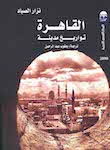

 ISBN-13: 978-0313277917
ISBN-10: 0313277915
ISBN-13: 978-0313277917
ISBN-10: 0313277915
|
The history of the Islamic world includes many unique cultural, religious, scientific, and architectural developments. Among these was the evolution of the Arab Muslim city, which occurred during the rapid expansion of the Muslim empire in the seventh and eighth centuries A.D. In this probing volume, Nezar AlSayyad examines the extraordinary characteristics of Islamic urbanism and the process by which cities and towns were absorbed and physically transformed by Islam. The early leaders of the Muslim empire--caliphs, amirs, and other rulers--had a lasting effect on what the modern scholar would call their cities' urban form. AlSayyad demonstrates that the stereotypical model of the Muslim city is inadequate, not only because individual rulers in regions of the empire were different, but also due to various cultural influences that were indigenous to conquered areas.
After a prologue, the study begins with a historiography of the concept of the Muslim city and how it was paralleled by the development of its physical form. Garrison towns, established as military camps by early Arab conquerors, are examined next by AlSayyad. His research shows that building methods and urban form in the Arab cities were products of Islamization and consolidation of Caliphal power. New capital towns and cities, AlSayyad maintains, were also results of elaborate personal expressions of politico-religious authority by certain Muslim rulers. The book ends by suggesting that the Arabs' and their leaders' changing view of the role of architecture was a major factor behind the fluid urban forms of Muslim cities. This significant contribution to the study of the Arab world and its cultural history will be of great value to Middle East, urban, and architectural historians, anthropologists, and archaeologists, as well as to students of Islamic history and urbanism.
"A synthesis built on a reading of the Arab chronicles, this book concerns the underlying order of Muslim cities. AlSayyad attempts to explain the process by which cities of the Middle East became Islamic, and focuses particularly on the role of several caliphs in shaping the form of the Arab Muslim city. The book challenges conventional wisdom regarding urban form as derived simply from mosque, palace, citadel, bazaar, and separated residential quarters. It details how, in towns created or appropriated by Islam, form was associated with functional interconnection. The author, an architect and urban historian, takes a "thematic" approach, combining historical and geographical concerns in placing city form in its cultural context as a planned expression of symbolic political power. Muslim cities, in short, became manifestations of an iconographic relationship of physical elements and institutional structure. An important contribution to urban history and cultural studies. College, university, and public libraries." - Choice.
"Overall, Cities and Caliphs is an excellent book: very well written and documented; insightful and stimulating; and original. My only regret is the book's brevity: given its quality, 158 pages of main text seemed all too short!" - Historical Geography.
NEZAR ALSAYYAD is Assistant Professor of Architecture at the University of California, Berkeley, where he teaches courses on third world housing, urban design and history of Islamic architecture. His other books include The Streets of Islamic Cairo and Dwellings, Settlements and Tradition.